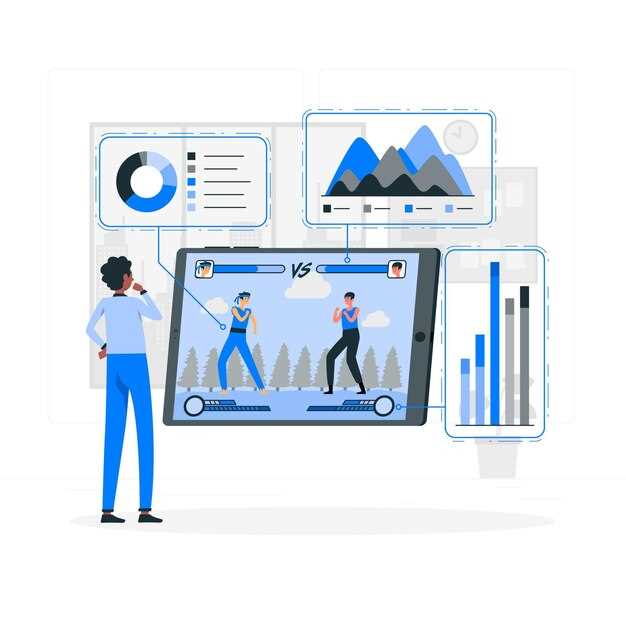
In the world of racing, achieving peak performance on the track goes beyond driver skill and vehicle engineering. A critical component of modern racing is the use of telemetry, a sophisticated method of collecting and analyzing data in real-time. This technology allows teams to monitor every aspect of a vehicle’s performance, from engine efficiency to tire dynamics, providing invaluable insights that can shape race strategy.
Telemetry data serves as a treasure trove of information, enabling teams to identify strengths and weaknesses during practice sessions and races. By interpreting this data thoughtfully, teams can make informed decisions regarding tire selections, pit strategy, and even driver feedback. A strategic approach to analyzing telemetry not only enhances a team’s competitive edge but also fosters an environment of continuous improvement, where data-driven insights lead to refined techniques and optimized performance.
As racing technology evolves, the sophistication of telemetry systems continues to advance. Teams that embrace these innovations are better equipped to navigate the complexities of competitive racing, making the difference between victory and defeat. Understanding how to analyze and leverage race telemetry effectively is essential for any team aspiring to excel in the highly competitive arena of motorsports.
Identifying Key Performance Metrics from Telemetry Data

In the realm of competitive racing, effective strategy relies heavily on understanding and utilizing telemetry data. This data offers a wealth of insights into vehicle performance, driver behavior, and overall race dynamics. Here, we identify the key performance metrics that teams should focus on to optimize their competitive strategies.
- Lap Time Analysis
Lap times are one of the most fundamental metrics that teams analyze. By breaking down lap times into segments, teams can identify specific areas where improvements can be made, such as acceleration, braking, and cornering.
- Throttle and Brake Usage
Telemetry data allows for detailed tracking of throttle and brake application. Monitoring these metrics helps in understanding how effectively the driver is managing speed throughout the circuit.
- Cornering Speed
Cornering speed indicates how well a vehicle handles turns. Analyzing telemetry data on cornering speeds can reveal the car’s setup efficiency and driver skill in navigating complex sections of the track.
- Tire Performance
Tire wear and temperature data are crucial for strategizing pit stops and tire selection. Monitoring these factors through telemetry can optimize performance throughout the race.
- Fuel Consumption
Data on fuel usage helps teams predict pit stop timing and overall race strategy. Efficient fuel management can enhance performance, particularly in endurance racing.
- G-Forces
Telemetry can provide insights into the g-forces experienced by both the car and the driver. Understanding these forces can help with vehicle setup and safety strategies.
By closely analyzing these key performance metrics derived from telemetry data, racing teams can refine their strategies, enhance vehicle performance, and ultimately gain a competitive edge on the track.
Integrating Telemetry Insights into Race Strategy Development
In the highly competitive world of racing, the integration of telemetry insights into race strategy development has become essential for success. Data collected through telemetry systems provides critical information which can be analyzed to inform decisions that affect performance on the track. This data encompasses various aspects of vehicle dynamics, including speed, acceleration, tire temperatures, fuel consumption, and engine performance, all of which are crucial for formulating effective strategies.
Utilizing telemetry data allows teams to identify patterns and trends during practice sessions and races. By analyzing this information, teams can optimize car setups to improve handling and speed. For instance, understanding tire wear rates through telemetry can guide strategy on pit stops, ensuring that drivers minimize time spent in the pits while maximizing performance during critical race segments.
Furthermore, real-time telemetry analysis during a race allows teams to make instantaneous decisions based on the current race conditions. Teams can leverage data to adapt their strategies dynamically–altering pit stop strategies, adjusting fuel loads, or modifying driving techniques to respond to competitors’ actions and changing track conditions. Such adaptability is key to staying ahead in the race.
The implementation of advanced data analytics tools also enhances the predictive capabilities of telemetry insights. By employing machine learning algorithms, teams can forecast race scenarios and develop more accurate models of performance based on historical data. This enables them to create contingency plans and strategize for various situations that may arise during a race.
In summary, integrating telemetry insights into race strategy development is a multifaceted approach that enables teams to utilize comprehensive data analytics effectively. By making informed decisions based on accurate insights, racing teams can enhance their performance, improve their competitive edge, and ultimately secure victory on the track.
Evaluating the Impact of Weather and Track Conditions on Telemetry Analysis

Telemetry data provides crucial insights into vehicle performance during races, but external factors such as weather and track conditions can significantly influence these metrics. Understanding how these elements interact is essential for developing effective competitive strategies.
Weather plays a critical role in shaping race outcomes. Variables such as temperature, humidity, wind speed, and precipitation affect tire grip, engine performance, and overall vehicle handling. For instance, higher temperatures may increase the risk of tire degradation, prompting teams to adjust their pit strategies and tire choices. By analyzing telemetry data in conjunction with weather forecasts, teams can make informed decisions regarding setup adjustments and race tactics.
Track conditions are equally significant. The state of the track–whether wet, dry, or partially rubbered–directly impacts how a vehicle interacts with the surface. Changes in track grip affect acceleration, braking distances, and cornering speeds. Telemetry data reflecting tire slip angles, throttle application, and braking force can be correlated with specific track conditions to identify optimal performance strategies. This analysis allows teams to anticipate how their vehicles will respond under varying conditions during a race.
Combining telemetry analysis with an understanding of weather and track conditions enables teams to develop robust strategies. By continuously monitoring and analyzing real-time data, teams can adjust their race plans proactively, improving their chances of success. This holistic approach to data evaluation not only maximizes performance but also enhances adaptability, allowing teams to respond effectively to the dynamic nature of racing environments.











